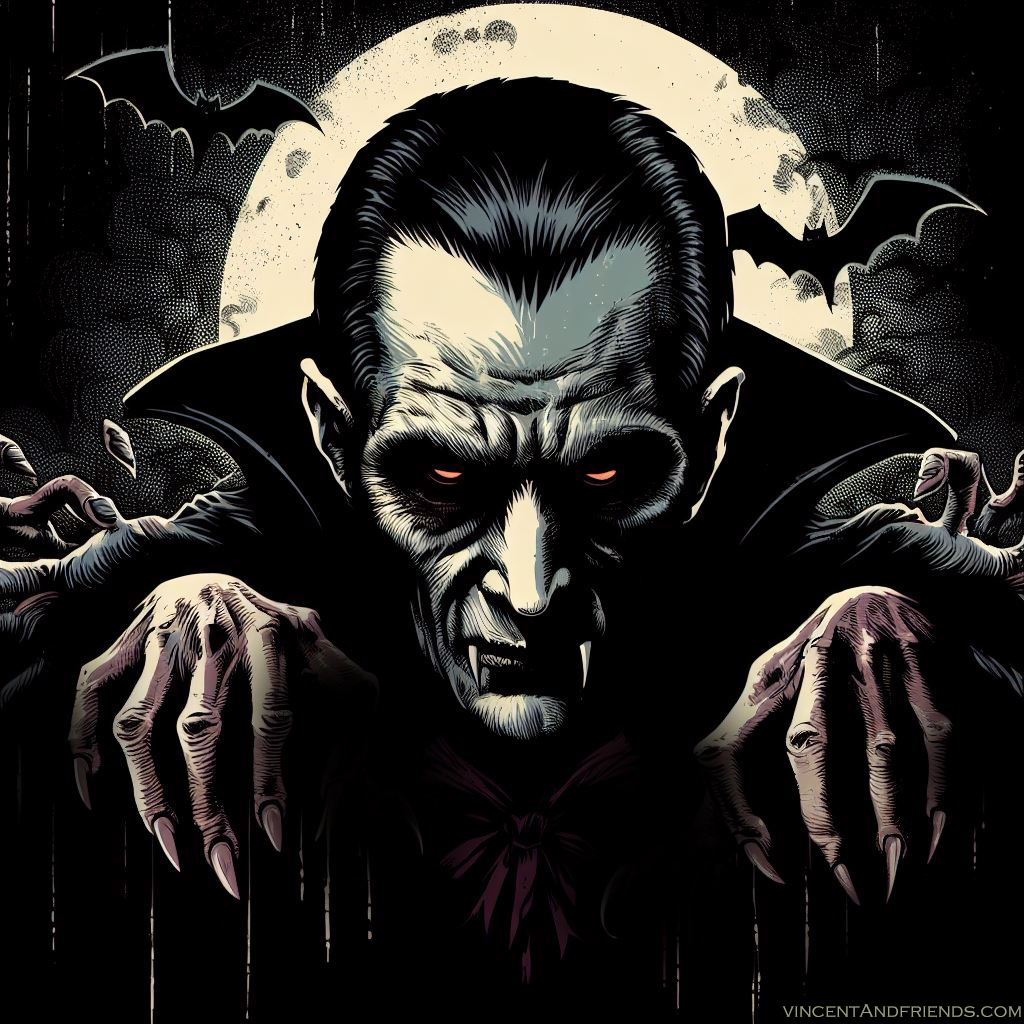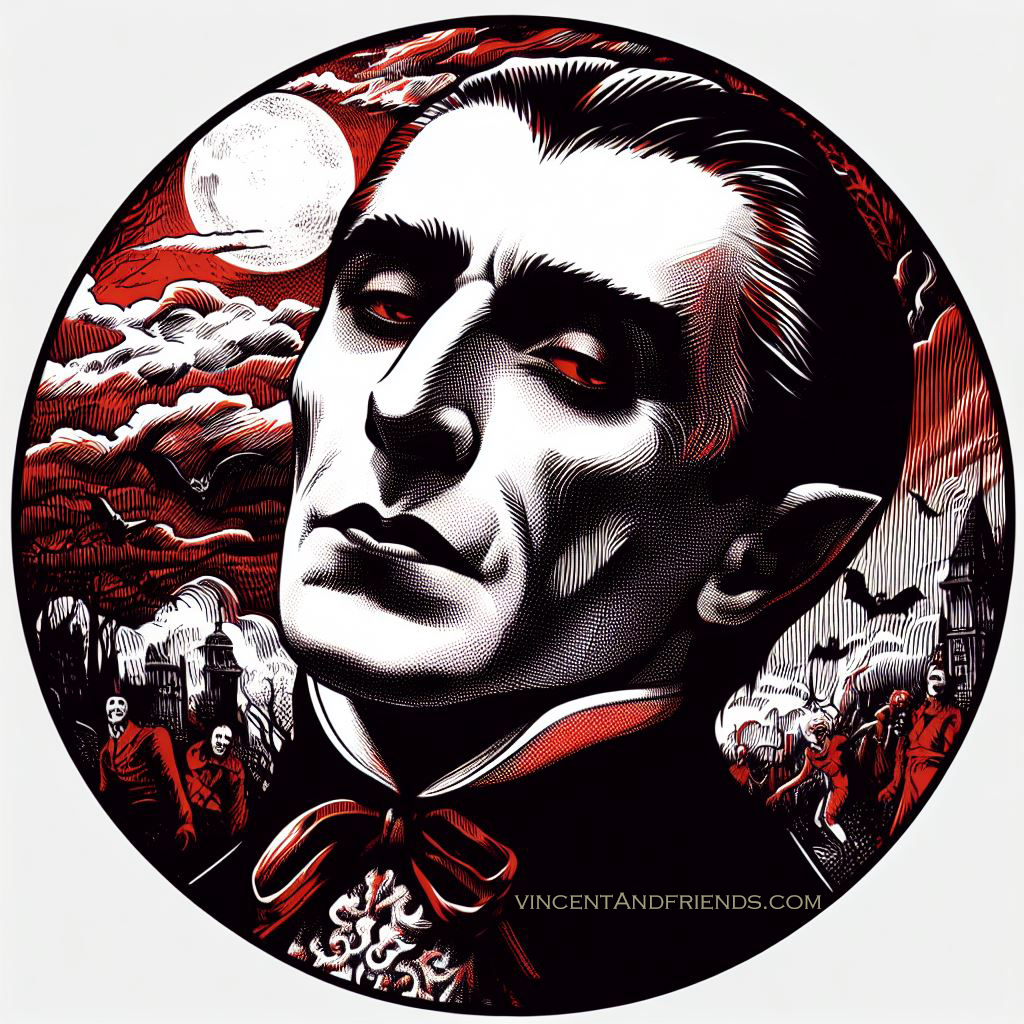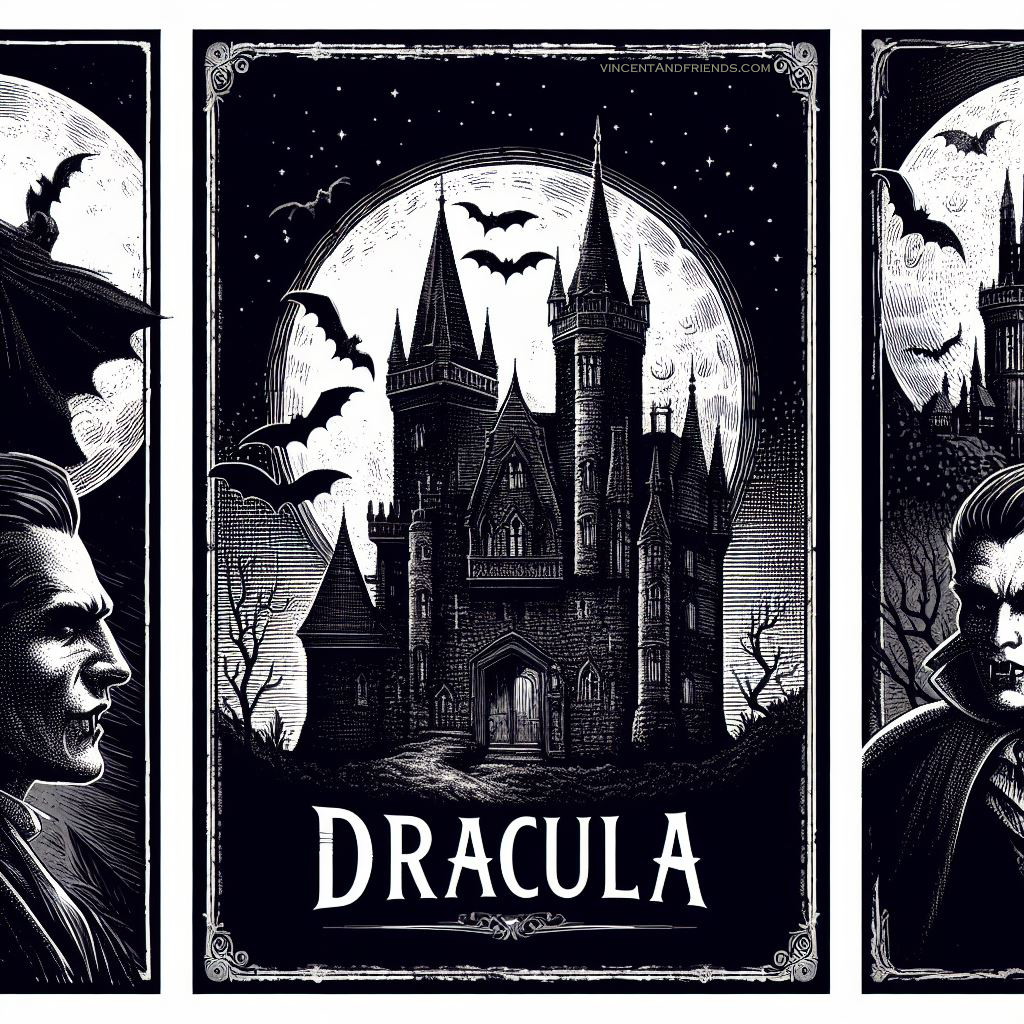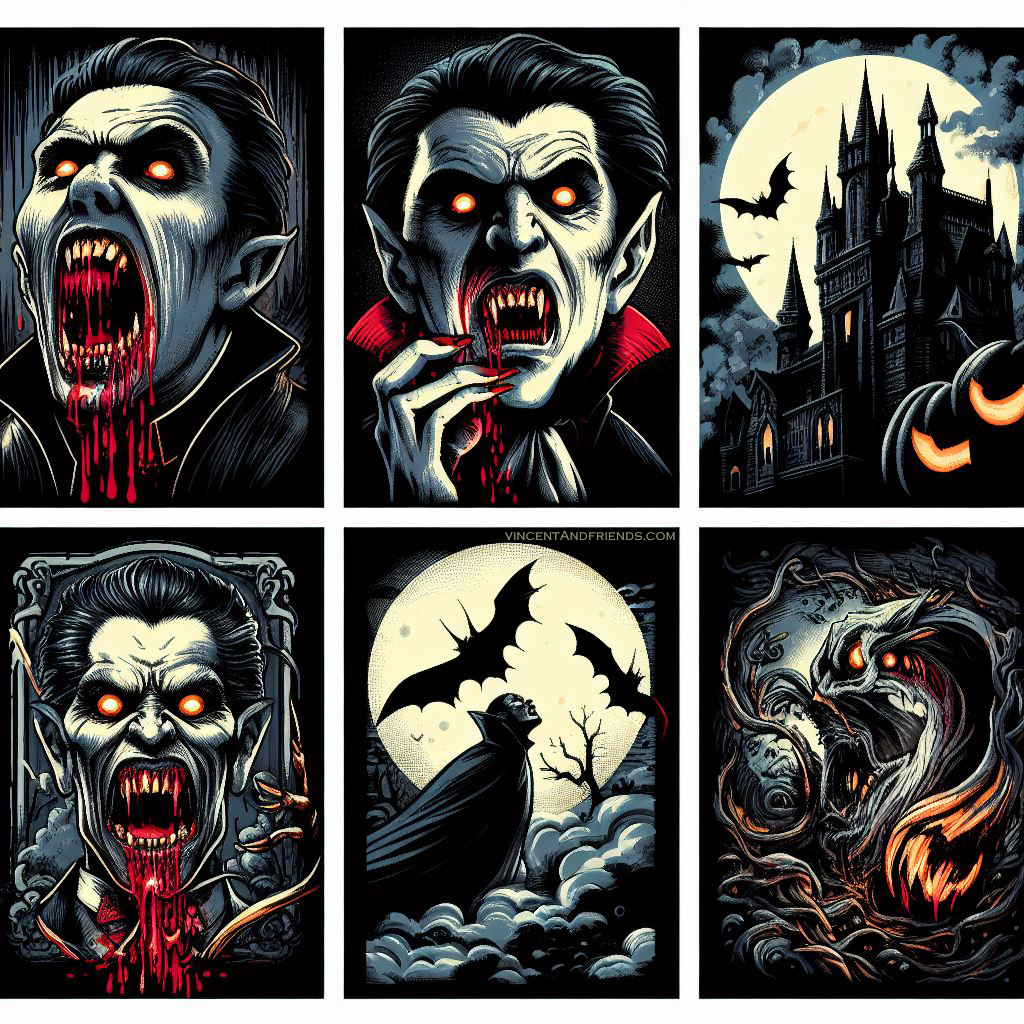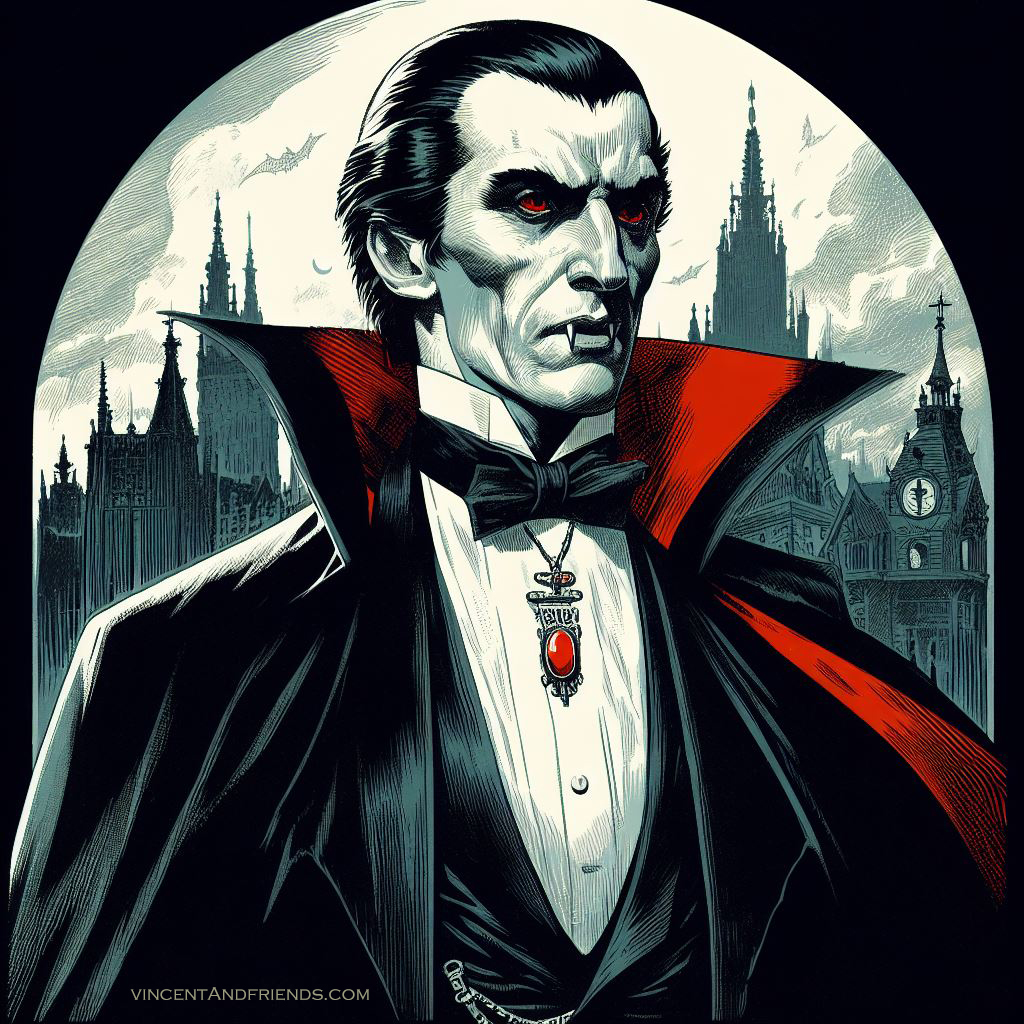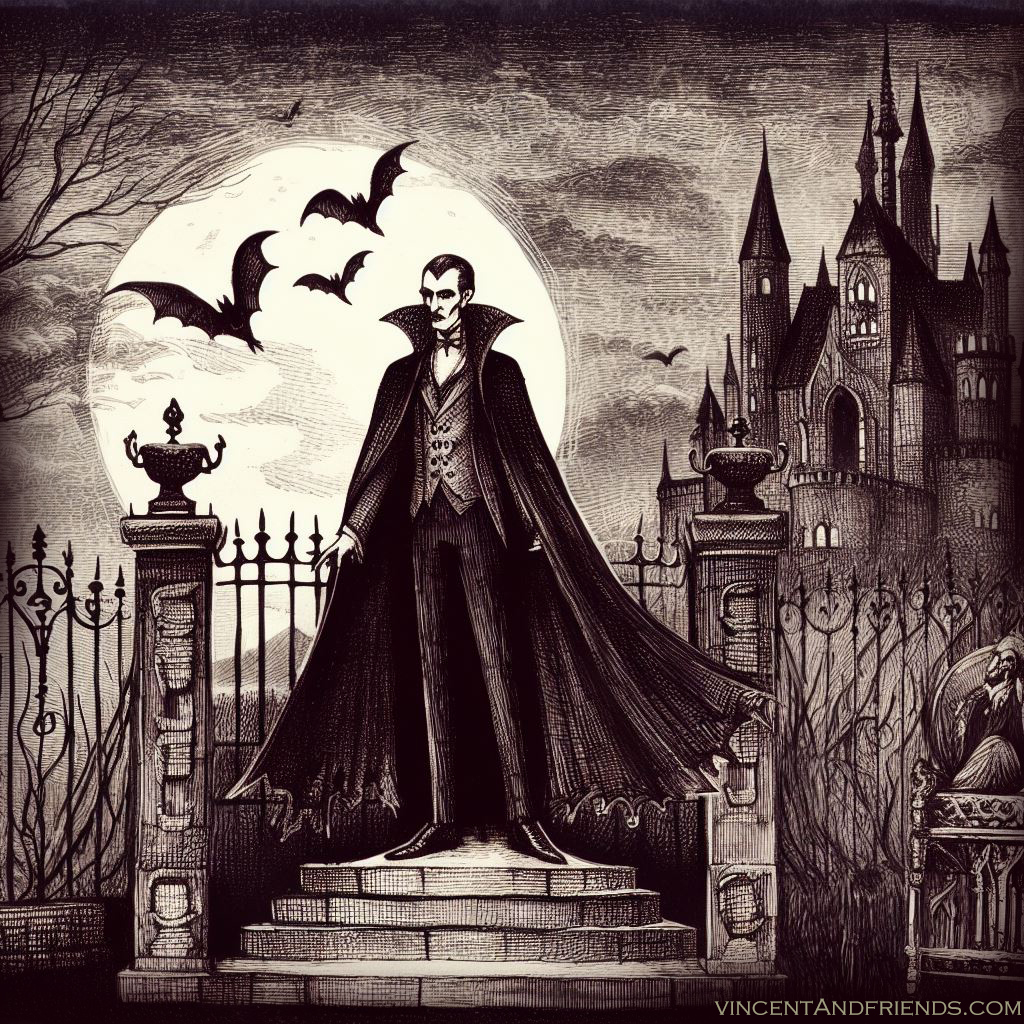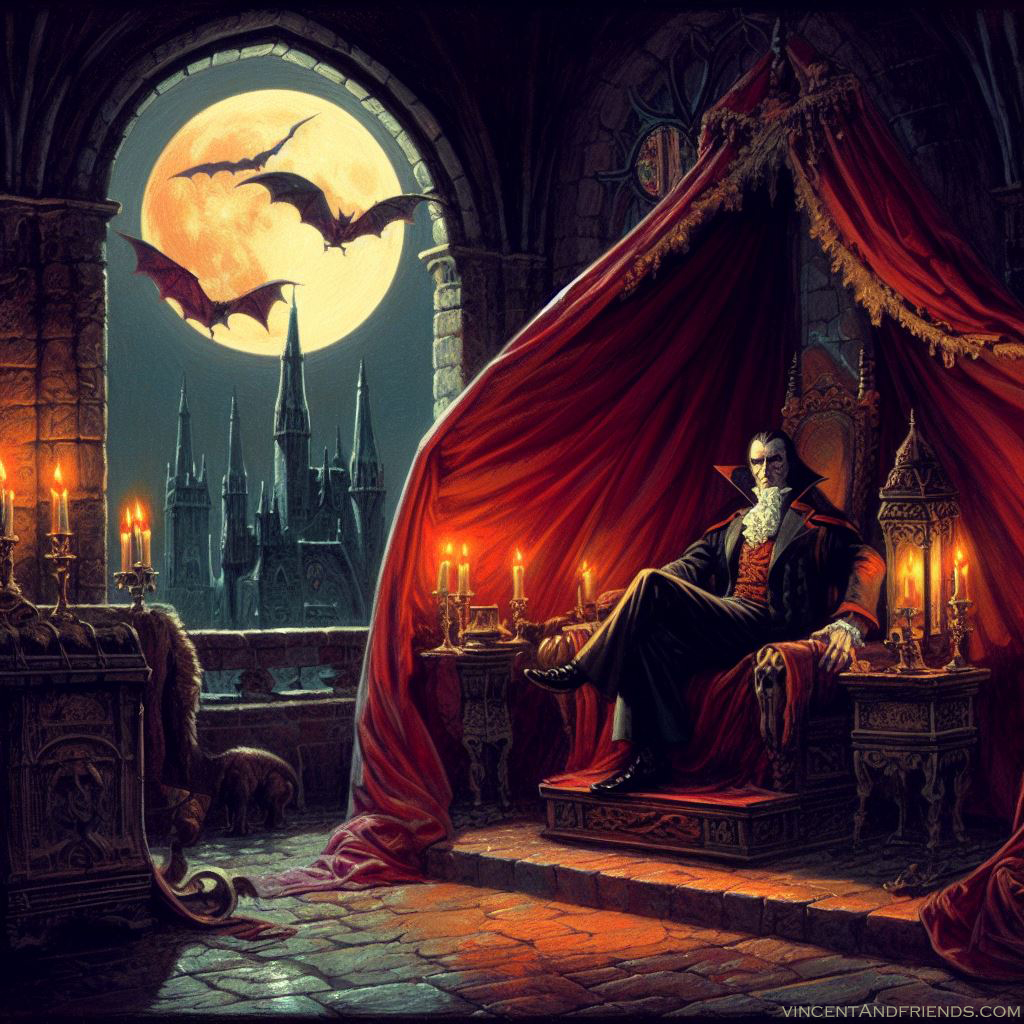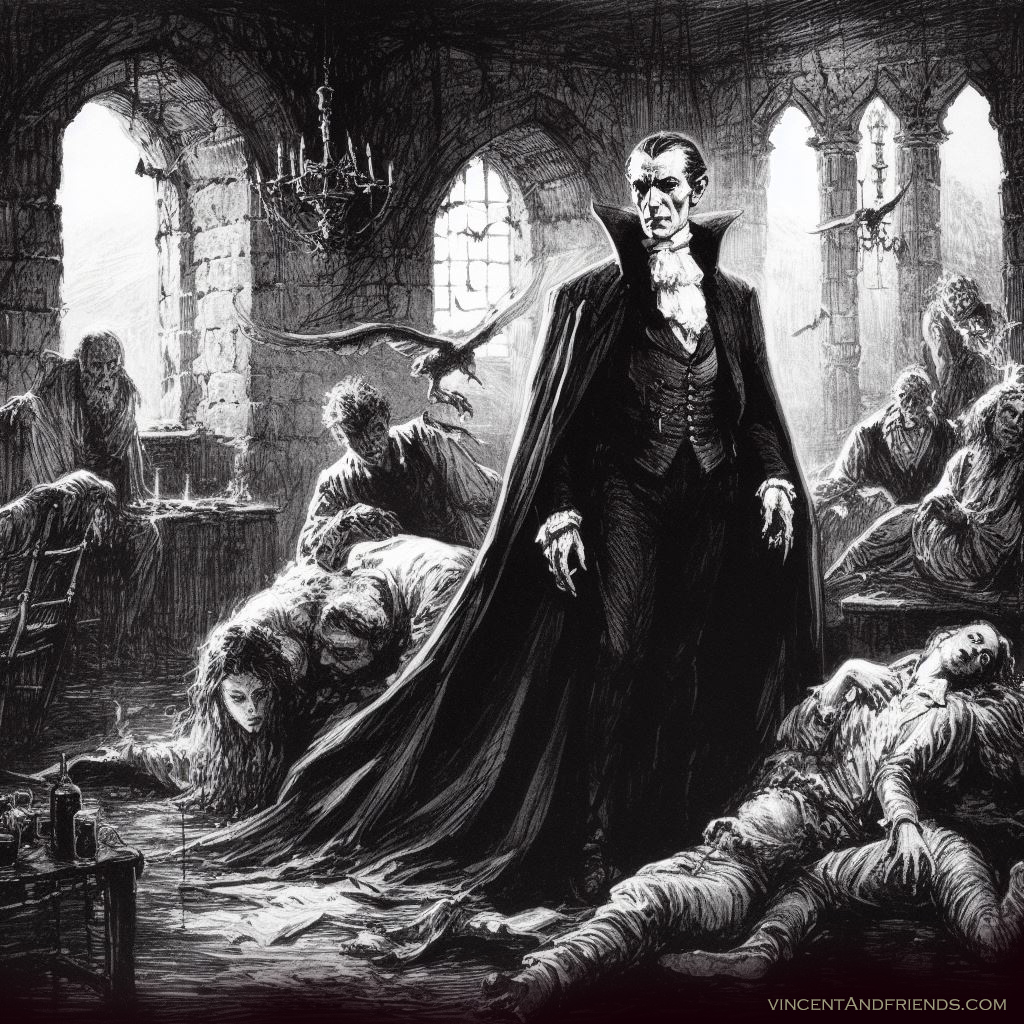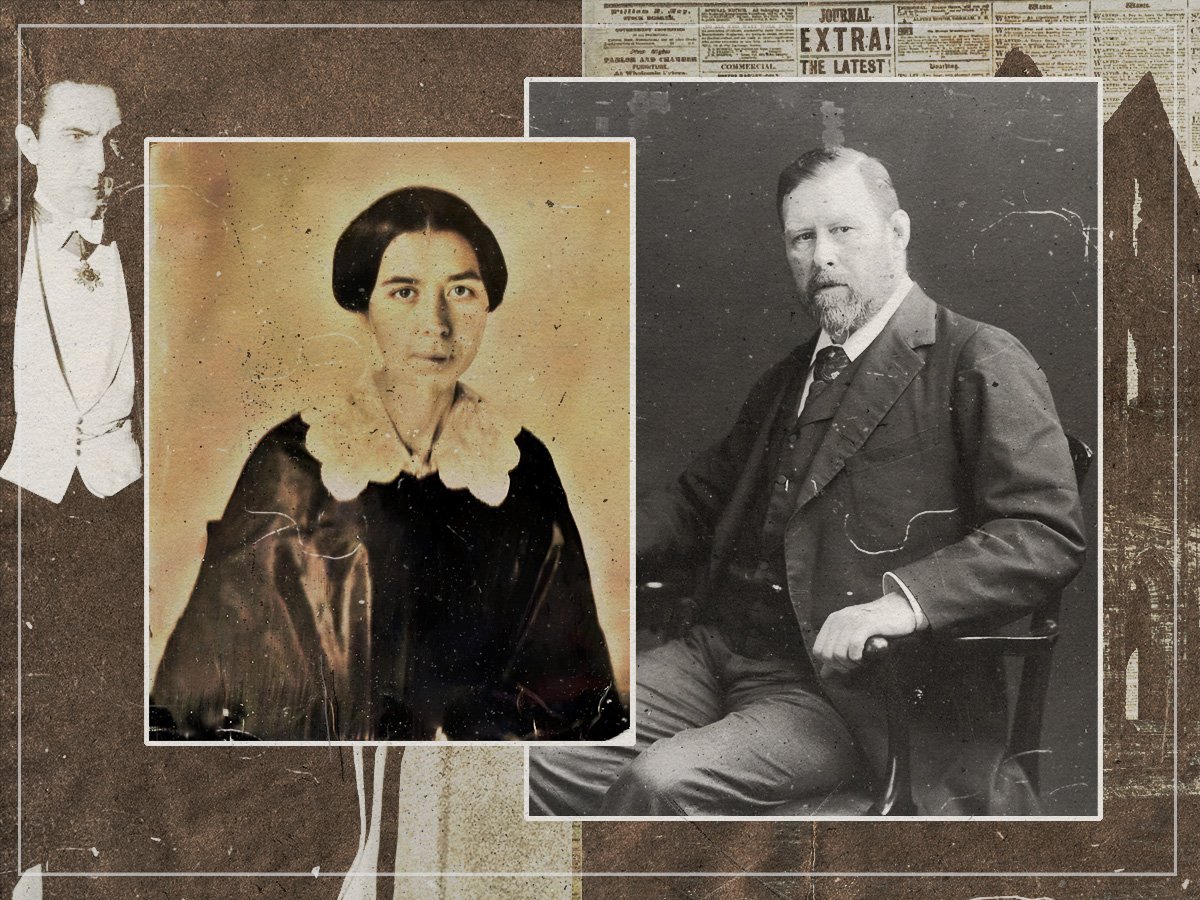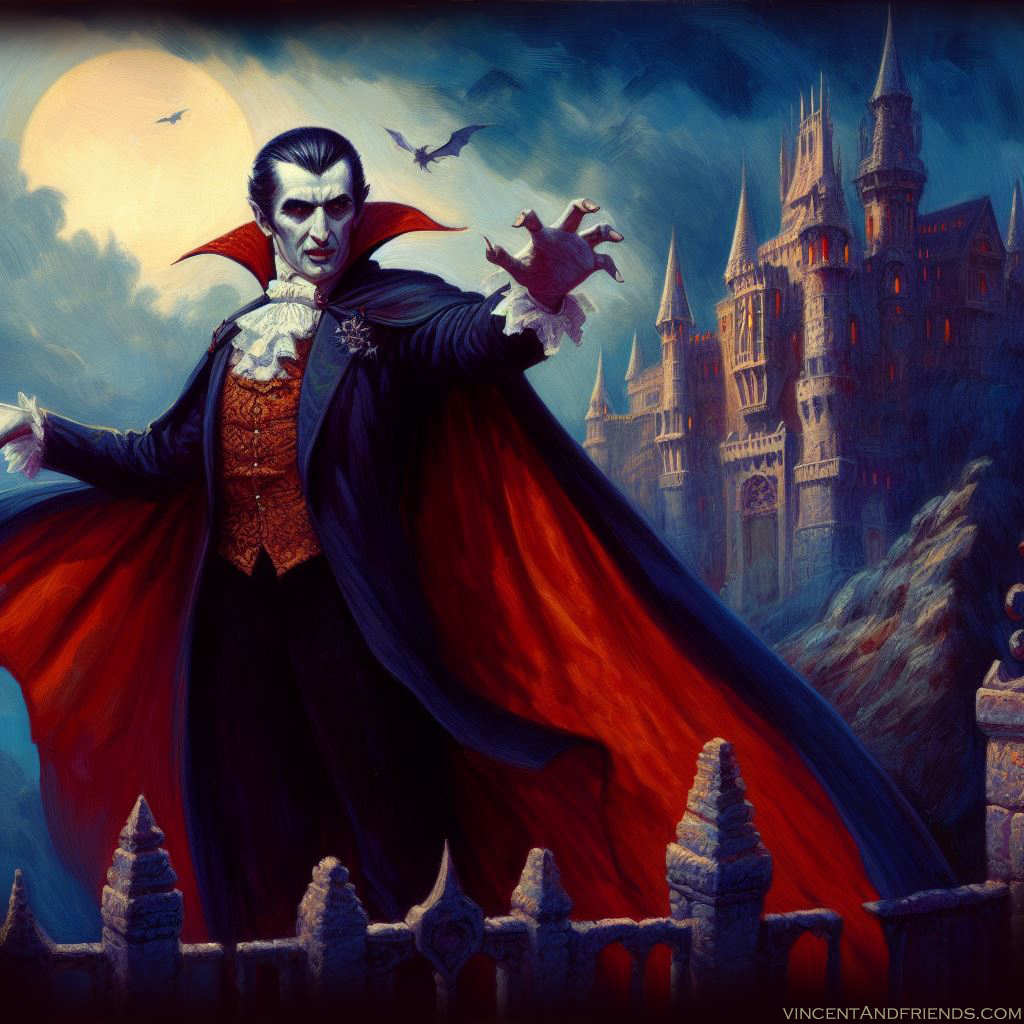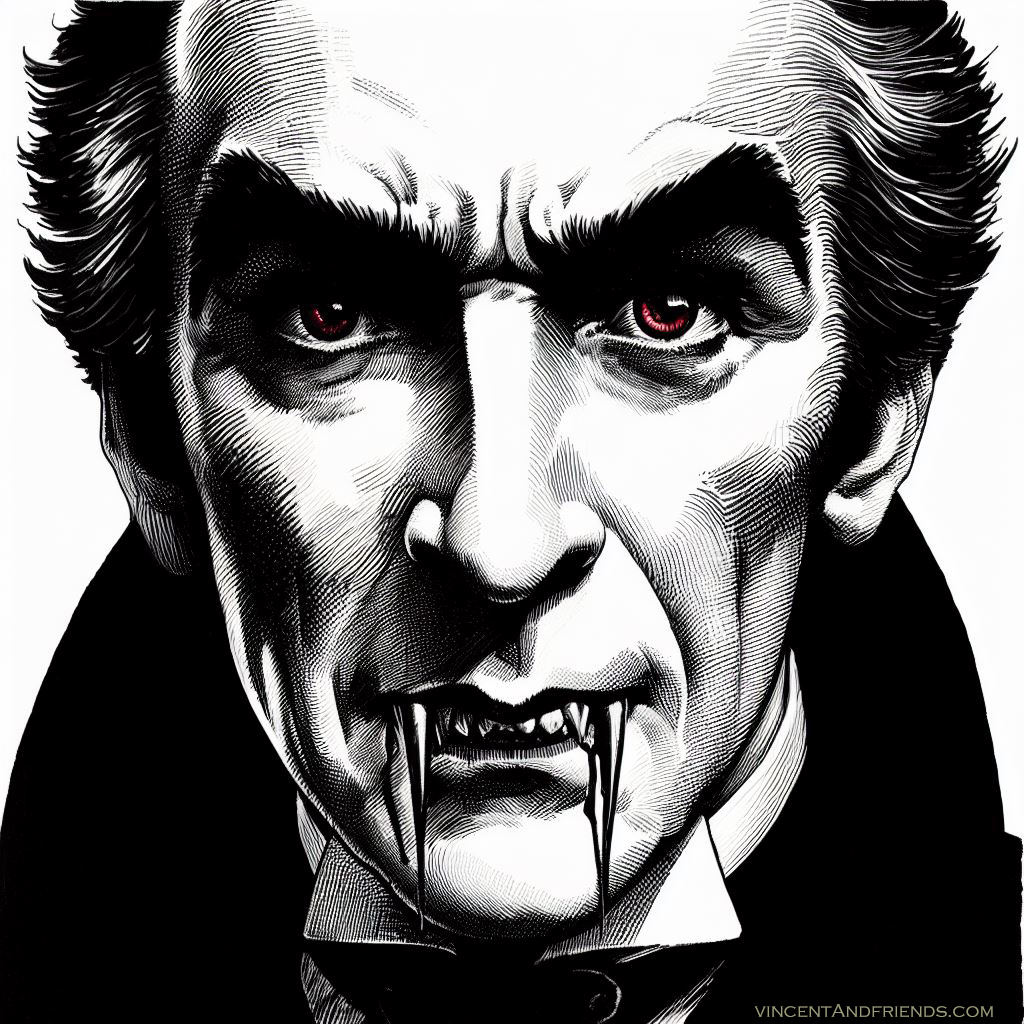From the eerie depths of Transylvania to the bustling streets of modern cities, the figure of Dracula has haunted popular culture for centuries.
Created by Bram Stoker in his 1897 novel, “Dracula,” this iconic character has undergone numerous transformations, captivating audiences across generations.
In this comprehensive exploration, we delve into the evolution of Dracula from the Victorian era to the present day, tracing the character’s journey through literature, film, and popular imagination.
The Birth of Dracula in Victorian Literature
- Bram Stoker’s Magnum Opus: Bram Stoker’s “Dracula” emerged during the late Victorian era, a time marked by fascination with the supernatural and Gothic literature.
- Victorian Society’s Fears: Stoker tapped into the anxieties of Victorian society, weaving themes of sexuality, xenophobia, and the fear of the unknown into his narrative.
- The Epistolary Form: Stoker’s use of letters, diary entries, and newspaper clippings lends a sense of authenticity and immediacy to the story, drawing readers into the chilling world of Dracula.
Dracula in Early Cinema: The Silver Screen’s Seductive Vampire
- Nosferatu: A Silent Classic: In 1922, F.W. Murnau’s “Nosferatu” brought Dracula to the silver screen, albeit with some alterations due to copyright issues.
- Bela Lugosi’s Iconic Portrayal: Bela Lugosi’s portrayal of Dracula in the 1931 film solidified the character’s image as a suave and sophisticated vampire, influencing countless adaptations to come.
- Hammer Horror Revival: The Hammer Horror films of the 1950s and 1960s revitalized the Dracula mythos, with Christopher Lee’s menacing portrayal leaving an indelible mark on popular culture.
Dracula in Contemporary Literature: A Resilient Literary Icon
- Modern Interpretations: Authors like Anne Rice and Stephen King have offered their own unique takes on the Dracula mythos, exploring themes of immortality, desire, and the human condition.
- Cultural Relevance: Dracula continues to resonate with contemporary audiences, inspiring a myriad of literary works that recontextualize the character for the modern era.
- The Influence of Gothic Revival: The resurgence of Gothic literature in the 21st century has sparked renewed interest in Dracula, with writers drawing inspiration from Stoker’s classic tale to craft their own narratives of terror and intrigue.
Dracula on the Small Screen: Television’s Undying Vampire
- From “Dark Shadows” to “Buffy”: Dracula has made numerous appearances on television, from the campy melodrama of “Dark Shadows” to the genre-defying brilliance of “Buffy the Vampire Slayer.”
- Netflix’s “Dracula“: The 2020 adaptation of “Dracula” by Steven Moffat and Mark Gatiss breathed new life into the character, offering a fresh and innovative take on the classic tale.
- The Enduring Allure: Despite the passage of time, Dracula’s appeal remains undiminished, captivating viewers with his charisma, complexity, and eternal quest for blood.
Victorian Era’s Scientific Beliefs and Prejudices in Bram Stoker’s Dracula
One of the key elements driving the narrative of “Dracula” is the clash between the rationality of Victorian science and the supernatural forces embodied by the vampire Count Dracula.
The characters in the novel, particularly the protagonist Professor Abraham Van Helsing, represent the scientific mindset of the time, relying on empirical evidence and rational thought to combat the threat posed by Dracula.
Van Helsing, with his knowledge of medicine, psychology, and folklore, epitomizes the Victorian fascination with using science to explain and understand the unknown.
However, Dracula himself symbolizes the irrational and uncontrollable forces that science struggles to comprehend. As a vampire, Dracula defies scientific explanation, existing beyond the boundaries of natural law.
His ability to manipulate the physical world through supernatural means challenges the Victorian belief in the absolute power of science to explain and control the universe.
Furthermore, “Dracula” reflects the prevailing prejudices of Victorian society, particularly regarding race, gender, and sexuality. The novel portrays Dracula as a foreign invader, embodying the fears and anxieties surrounding immigration and the “Other.”
His status as a Transylvanian nobleman from Eastern Europe reinforces stereotypes of the mysterious and barbaric foreigner threatening the civilized world of Victorian England.
Additionally, the depiction of female characters in “Dracula” highlights Victorian attitudes towards women and sexuality.
The female vampires, including Dracula’s brides, are portrayed as seductive and dangerous creatures who tempt men away from their virtuous and chaste Victorian ideals.
The character of Lucy Westenra, who becomes a victim of Dracula’s bite, represents the Victorian fear of female sexual agency and the consequences of straying from societal norms.
Dracula and the Pandemic
As the world grappled with a relentless pandemic, reminiscent of the plagues of old, the shadowy figure of Dracula emerged from the depths of history, his presence hauntingly timely.
In the midst of fear and uncertainty, his legend took on new relevance, mirroring the invisible threat that swept across nations.
Dracula, the immortal embodiment of fear and dread, found himself in a world ripe for his particular brand of terror.
The pandemic, with its invisible enemy and its indiscriminate reach, provided the perfect backdrop for his malevolent machinations.
The streets, once bustling with life, now lay deserted, echoing with the eerie silence of a world in lockdown.
But Dracula thrived in the darkness. As isolation and desperation spread among the populace, so too did his influence.
Like a virus, his whispers crept through the cracks of society, infecting hearts and minds with fear and despair.
In the isolation of their homes, people found themselves vulnerable to his insidious allure, drawn into his web of darkness with promises of power and control.
Yet, even in the face of such darkness, there were those who stood against it.
Heroes emerged from the shadows, fighting not only the pandemic ravaging their world but also the ancient evil that sought to exploit it.
With courage and resilience, they rallied their fellow humans, inspiring hope in the face of despair.
And so, the battle between light and darkness played out against the backdrop of the pandemic-stricken world.
It was a battle not just for survival but for the very soul of humanity. In the end, it was not just a fight against a virus or a vampire but against the darkness that lurked within us all.
As the world slowly emerged from the grip of the pandemic, Dracula’s presence faded back into the shadows, a reminder of the enduring nature of fear and the eternal struggle between light and darkness.
But the lessons learned during those dark days remained, reminding humanity of its capacity for both great evil and great courage in the face of adversity.
Mercy Brown and Dracula
Mercy Brown and Dracula belong to two distinct narratives, but they both intersect at the intersection of folklore, superstition, and the macabre.
Mercy Brown was a real person, born in 1873 in Exeter, Rhode Island.
She became entwined in one of the most infamous cases of the New England vampire panic.
In the late 19th century, tuberculosis ravaged communities across America, and with limited medical understanding, people often turned to superstition to explain the unexplainable. When multiple members of the same family died from tuberculosis, locals sometimes suspected vampirism as the cause.
Mercy Brown’s family fell victim to this belief when her mother and sister also succumbed to tuberculosis.
In 1892, Mercy herself died of the disease at the age of 19. Her body was exhumed in an attempt to stop the spread of the disease.
Some believed that if a corpse showed signs of being a vampire, such as little decomposition or the presence of blood in the heart, removing and burning the heart could stop the spread of the disease.
Unfortunately, Mercy’s body had decomposed normally, but the superstition persisted.
Despite the vast differences between Mercy Brown and Dracula, they are both connected through the human fascination with death, disease, and the supernatural.
Mercy Brown represents a tragic case of superstition gone awry, while Dracula embodies the enduring allure of vampires in popular culture. Both narratives continue to captivate audiences, serving as reminders of humanity’s complex relationship with mortality and the unknown.
image: Mercy Brown via faroutmagazine.co.uk/mercy-brown-vampire-inspired-dracula
Dracula in Popular Culture: Merchandise, Music, and More
- Merchandising Madness: Dracula’s image has been emblazoned on everything from t-shirts and action figures to coffee mugs and cereal boxes, demonstrating the enduring popularity of the character.
- Musical Tributes: From the haunting melodies of “Bela Lugosi’s Dead” by Bauhaus to the operatic grandeur of “Dracula: The Musical,” Dracula’s influence extends into the realm of music, inspiring artists across genres.
- Halloween Icon: Dracula has become synonymous with Halloween, with countless costumes, decorations, and parties paying homage to the Prince of Darkness each year.
Dracula’s Immortal Legacy
As we reflect on Dracula’s journey from the Victorian age to the present day, it becomes clear that the character’s appeal lies in his ability to adapt and evolve with the times.
Whether on the page, the screen, or the stage, Dracula continues to cast his dark and irresistible spell over audiences worldwide.
As long as there are shadows to hide in and whispers of the night, the legend of Dracula will endure, a timeless reminder of the eternal allure of the undead.
Have You Written The Next Dracula?
Need Help With Your Creative or Literary Packaging Needs?
Looking to bring your ideas to life with captivating storytelling and imaginative flair?
Whether you need compelling copywriting, engaging written, visual or video content creation, or literary packaging that stands out, I’m here to help.
Let’s collaborate to turn your vision into reality. Reach out to me today to discuss your project and let’s embark on a journey of creativity together!

